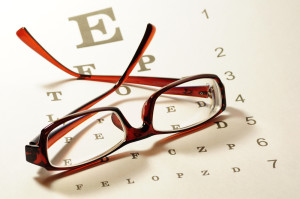The British Optical Association Museum – A MusEYEum Like No Other
London never fails to amaze me. No matter what season we may be in; come rain or shine, there is always something to do and experience. This time, our focus falls on a museum tucked away in Craven Street. Under the hustle and bustle of Trafalgar Square, is a collection of spectacles like no other. The British Optical Association (BOA) Museum, founded by J H Sutcliffe in 1901, is a unique museum that holds over 18,000 objects and archival items relating to the history of optometry, the human eye, visual aid, as well as these subjects in art.
The museum, hosted by the College of Optometrists, opens their doors to the public during the week to view, admire and discover more about the changes that have been made to the quality of vision throughout the years. When you enter their premises, you will be greeted by the amicable and enthusiastic, Neil Handley, who takes you on the guided tour of the exhibits. Not only has he been the curator of the museum since 1998, but he is also recognised as one of UK’s principle historians of spectacles, vision aids and opticians.
The Eye-Opening Experience
The BOA Museum houses items varying from antique ophthalmic books to spy glasses so prior to starting our tour; Neil asked me if there was an area in particular I would like him to focus on during the tour. I assured him that all I wanted was a general visit to learn and discover more about these artefacts and any interesting trivia would be most welcome. Giving me my first dose of trivia, Neil indicated that the first spectacles were invented in the 1 3th century in Veneto, Italy. As there is no surviving pair from that time, they hold a tribute piece from Murano which is vibrant glass sculpture known as ‘Occhio Costantini’.
3th century in Veneto, Italy. As there is no surviving pair from that time, they hold a tribute piece from Murano which is vibrant glass sculpture known as ‘Occhio Costantini’.
We then moved to the the ‘British Optical Association Library’, known to be one of the world’s greatest collections of antiquarian ophthalmic books. The library contains around 6,500 optical books and pamphlets and houses titles from the likes of Galileo and Newton. You will also notice an array of different Snellen Charts on the library walls, not to mention rare treasures of 18th century English opticians.
The museum, located in the basement of the building is divided into two rooms. The ‘Sutcliffe Room’, named after J H Sutcliffe, contains antique, vintage and modern spectacles and also a combination of measuring equipment from 400 years ago. Here, you will be able to find antique glasses from all over the world, materials that vary from metal to tortoiseshell and an eye-opening collection of modern sunglasses. The room also holds telescopes and magnifying apparatus for bugs and fauna.
The room adjacent to it, known as the ‘Giles Room’, was named after dedicated former BOA Secretary George Giles. Apart from holding the displays of contact lenses, diseased eyes and temporary museum displays, the area that caught my eye were the section of ‘spy glasses’. These came in all colours, shapes and sizes, some of which were also embedded into ancient hand-held fans.
Keep Your Eyes Open For A Spooky Visitor
Apart from the artefacts, there’s another area you should be on the lookout for – the resident ghosts. Neil indicated that on 13 March 2006, a decorator at the College had spotted a man named George in a blue coat and hat in the corner of the Sutcliffe Room searching for a lady named Mary. A day later, the apparition was spotted again. Further research revealed that there had been leaseholders of a block on the east side of Craven Street in 1754. Could this be pure coincidence? Visit the museum and be the judge for yourself.
To visit the British Optical Association Museum, contact them via phone, post or e-mail. The tour lasts an hour and admission is free. A guided tour of the College Meeting Rooms can also be arranged for a nominal charge.



